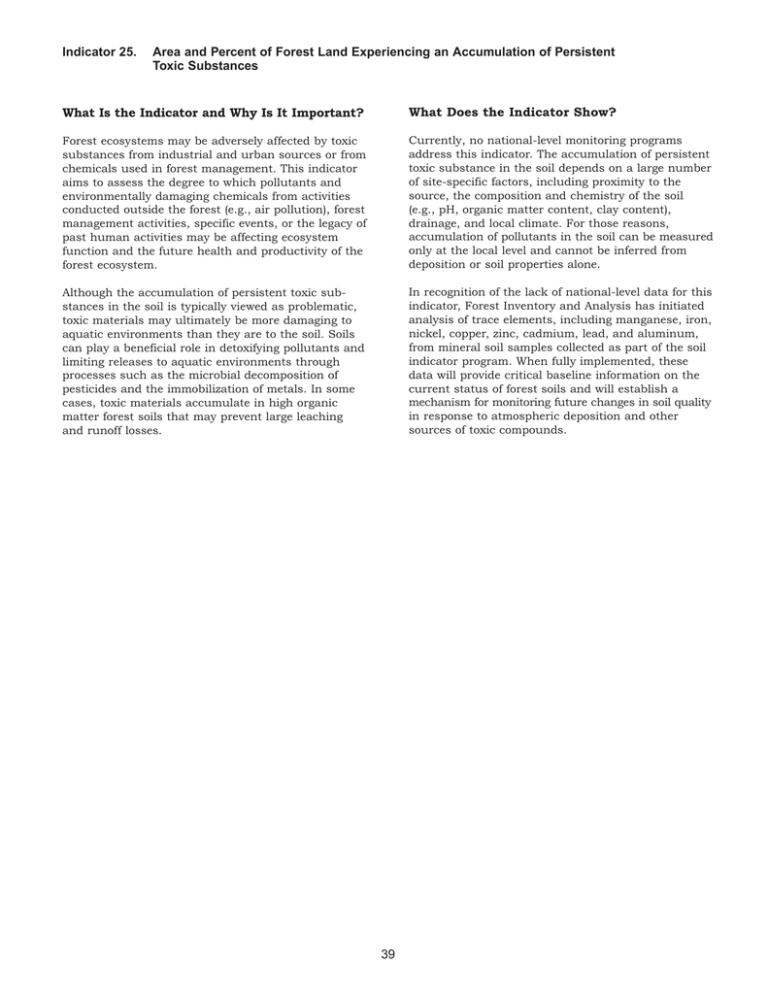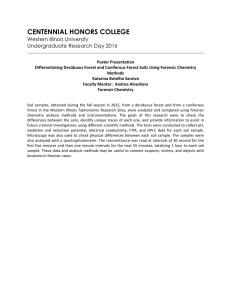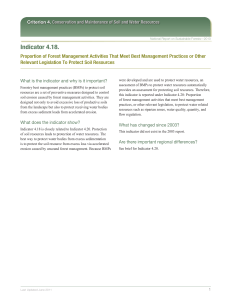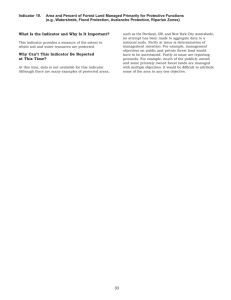Indicator 25. Toxic Substances
advertisement

Indicator 25. Area and Percent of Forest Land Experiencing an Accumulation of Persistent Toxic Substances What Is the Indicator and Why Is It Important? What Does the Indicator Show? Forest ecosystems may be adversely affected by toxic substances from industrial and urban sources or from chemicals used in forest management. This indicator aims to assess the degree to which pollutants and environmentally damaging chemicals from activities conducted outside the forest (e.g., air pollution), forest management activities, specific events, or the legacy of past human activities may be affecting ecosystem function and the future health and productivity of the forest ecosystem. Currently, no national-level monitoring programs address this indicator. The accumulation of persistent toxic substance in the soil depends on a large number of site-specific factors, including proximity to the source, the composition and chemistry of the soil (e.g., pH, organic matter content, clay content), drainage, and local climate. For those reasons, accumulation of pollutants in the soil can be measured only at the local level and cannot be inferred from deposition or soil properties alone. Although the accumulation of persistent toxic substances in the soil is typically viewed as problematic, toxic materials may ultimately be more damaging to aquatic environments than they are to the soil. Soils can play a beneficial role in detoxifying pollutants and limiting releases to aquatic environments through processes such as the microbial decomposition of pesticides and the immobilization of metals. In some cases, toxic materials accumulate in high organic matter forest soils that may prevent large leaching and runoff losses. In recognition of the lack of national-level data for this indicator, Forest Inventory and Analysis has initiated analysis of trace elements, including manganese, iron, nickel, copper, zinc, cadmium, lead, and aluminum, from mineral soil samples collected as part of the soil indicator program. When fully implemented, these data will provide critical baseline information on the current status of forest soils and will establish a mechanism for monitoring future changes in soil quality in response to atmospheric deposition and other sources of toxic compounds. 39




